Avoid Sustainability Visual Cliches, Do This Instead
Visuals are essential for engaging audiences in your sustainability story. Yet too often, organizations default to clichéd imagery that can make even the most authentic initiatives appear generic or insincere. The challenge isn’t just aesthetic — it’s strategic.
When sustainability visuals feel disconnected from your brand or rely on overused stock imagery, you risk losing trust and making stakeholders skeptical about your commitments. This shift requires moving beyond the “sea of sameness” in sustainability imagery to create visual communications that are both meaningful and brand-aligned. Drawing on our 25 years of experience helping organizations tell their sustainability stories, we’ll share how to avoid common visual pitfalls and what to do instead that will resonate with your audiences instead.
Don’t use generic sustainability visuals
These examples speak for themselves — a sea of sameness: green, trees, leaves, seedlings, globes, cycles, lightbulbs… nothing that has impact.
Image search “sustainability” or ask ChatGPT and see this:
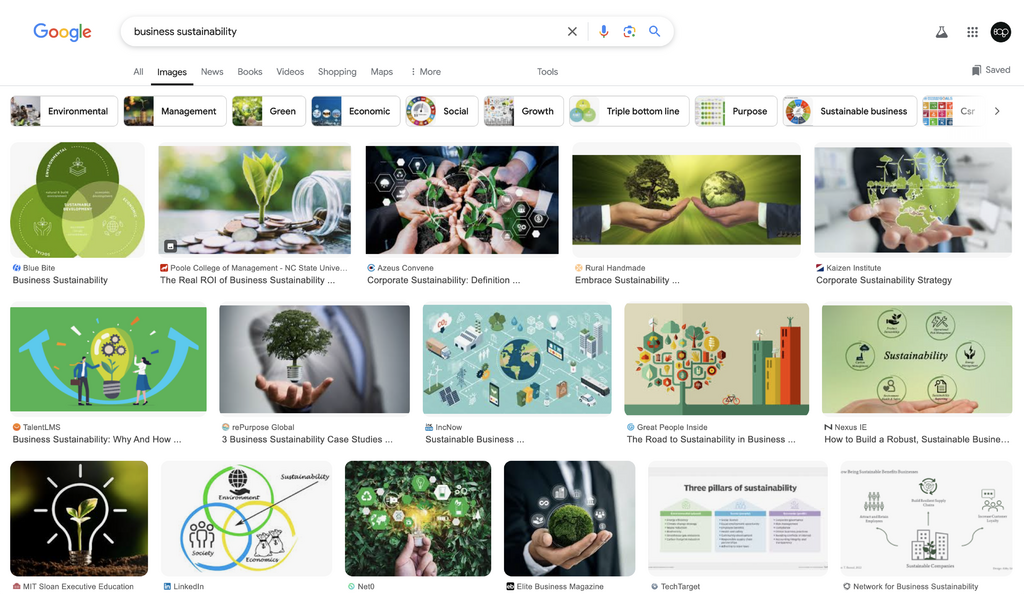
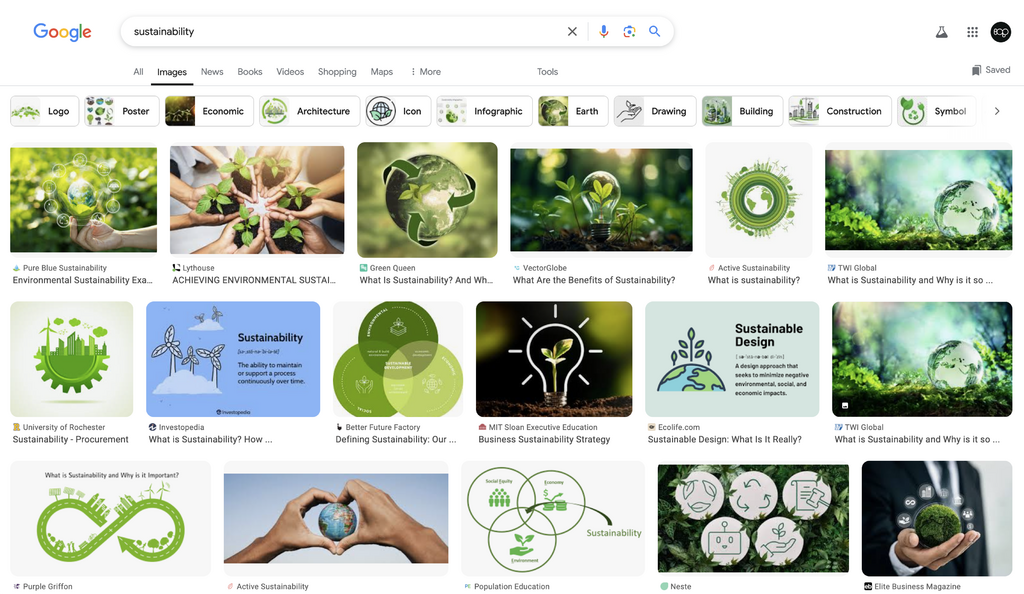
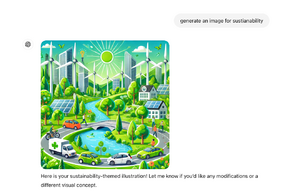
OK, it’s hard. So, what should you do?
Communicating abstract concepts is not easy, and the sustainability associations and worldview of the audiences vary considerably. Some people will come with negative connotations, others positive. It’s complex. Creating meaningful visuals for sustainability communications requires intentional choices. Here are 6 strategies:
1. Use on-brand imagery
Your sustainability communications should feel like a natural extension of your brand. Use your established visual language — colors, typography, photo style, and design elements — to reinforce that sustainability is integral to your business strategy. If you’ve developed special program branding, ensure it works harmoniously with your master brand. If it doesn’t fit your brand, just don’t use it.
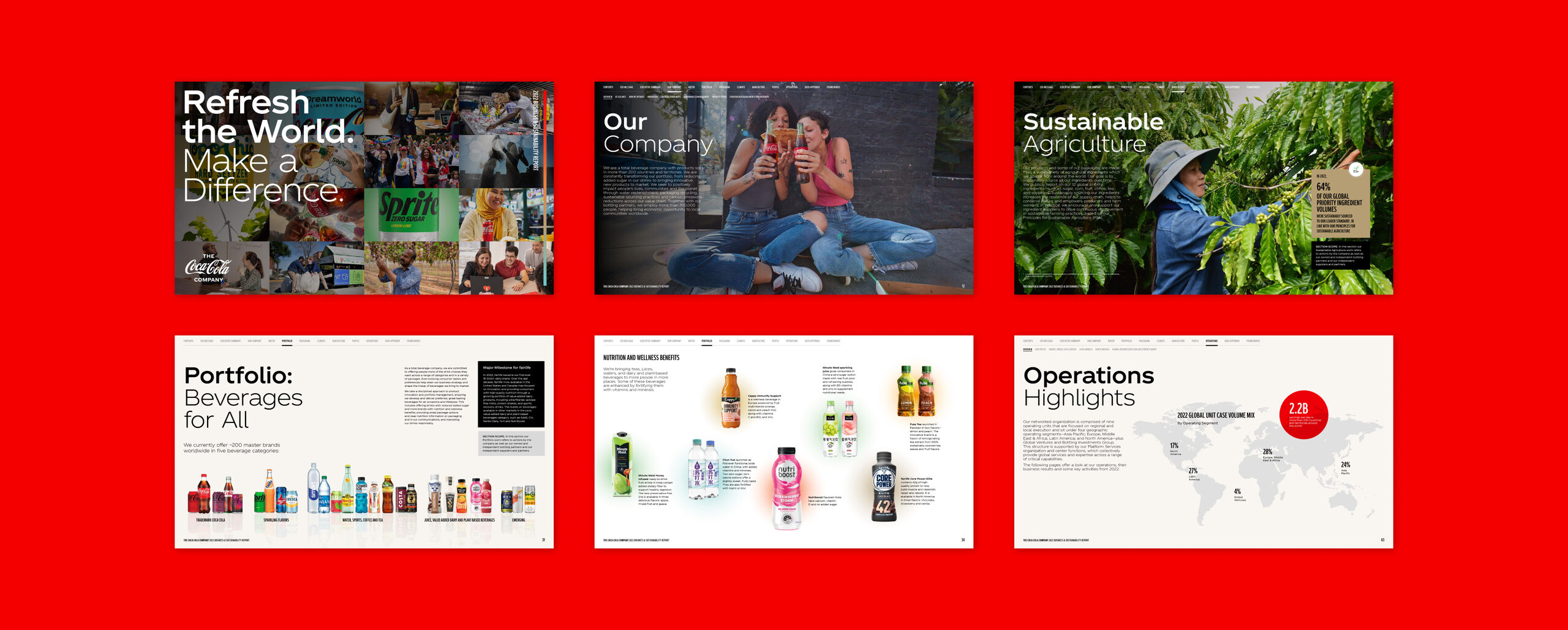
2. People make it meaningful and relatable
No matter the sustainability topic, it affects people and communities. Feature your employees, customers, or community members who benefit from your initiatives. Authentic photography of real people brings credibility to your story. It’s even better if they speak in their own words in a quote or testimonial, strengthening the human connection. Giving reader someone to relate to make a complex concept tangible.
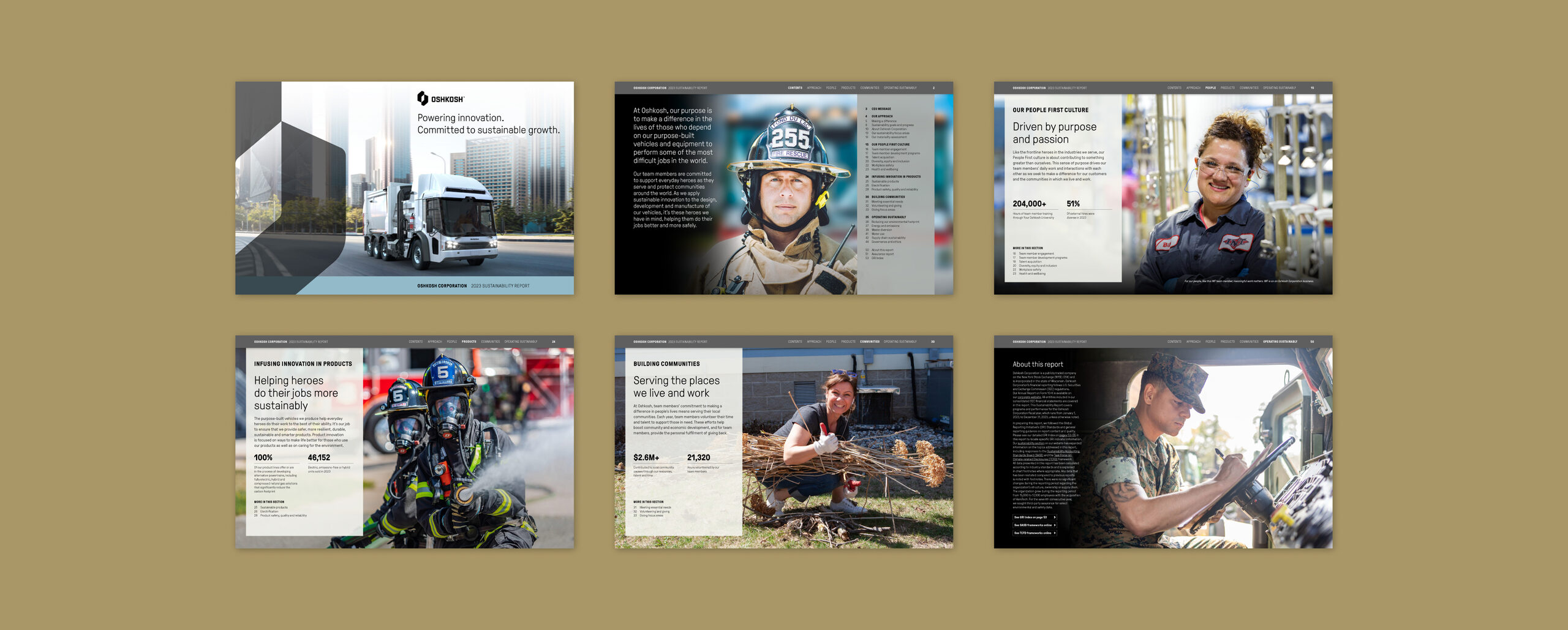
3. Transform your data into visual stories
Make your progress visible through thoughtfully designed infographics and data visualizations. Studies show that humans process visual information 60,000 times faster than text. Well-designed charts, graphs, and infographics simplify complex sustainability concepts, highlight progress toward goals, and make data more engaging and memorable. (See more on infographics).
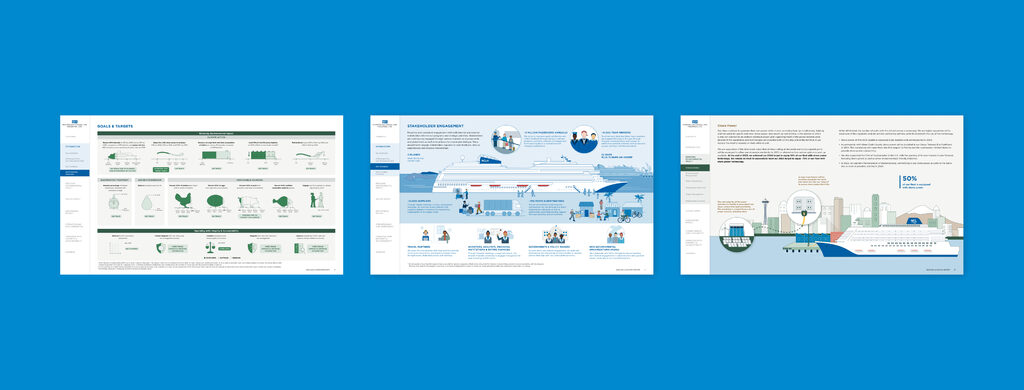
4. Keep it simple (you may not need an image)
Sometimes you might struggle to find the perfect image for a topic. That’s okay — don’t force it. You can use stats, charts and even words as your visuals. No photography is better than bad photography, and if an image is hurting rather than helping, consider why it’s there.
5. Document your actual work
Instead of relying on stock imagery, showcase your facilities, processes, and people in action. This includes your renewable energy installations, sustainable manufacturing processes, employee volunteer programs, community initiatives, and innovation centers. You can start small and build an image library over time. Original photos are the goal.
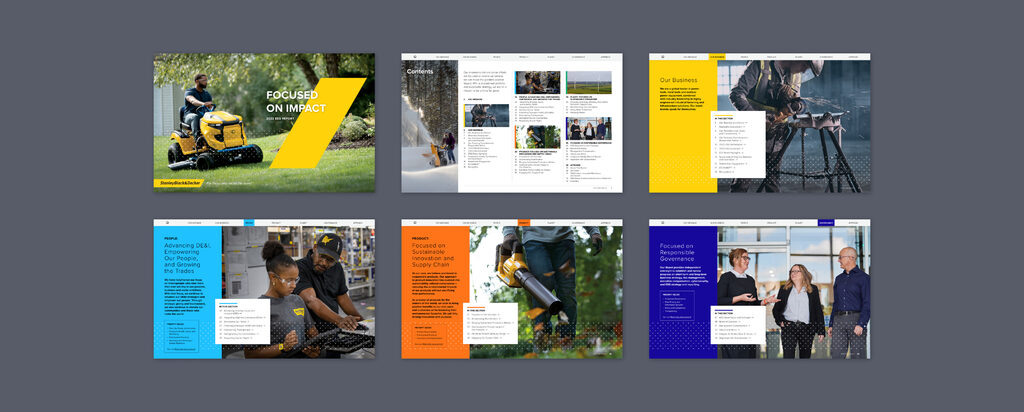
6. Be honest
If you are working on sustainability, say so (remember, it’s a journey, not a destination). Show the work you are doing to make progress. This doesn’t mean that you shouldn’t take your pictures on a sunny day in summer, but don’t use a stock photo of fabulous facilities you don’t have. All your good intentions — and the trust you’ve built — go out the window fast if there is even a whiff of dishonesty.
The Takeaway
Let’s face it, sustainability can be tricky to visualize. You’re dealing with complex topics, abstract concepts, and long-term impacts. But that’s exactly why getting the visuals right matters so much. When your visual communications feel authentic and connected to your actual work, they help build trust and engage stakeholders in your sustainability journey.
Remember, sustainability is part of your business story, not a separate initiative that needs its own visual language. You don’t need to paint everything green or rely on universal symbols to show you care. Focus instead on showing how sustainability lives within your organization through real examples, meaningful data, and genuine stories. Think of your visuals as an opportunity to bring your unique sustainability story to life, whether you’re creating a report, updating your website, or developing a campaign.
Ideas On Purpose Can Help
Not sure how to put this into practice? We are experts!
For over 25 years, IOP has been helping companies of all sizes. Communication, especially during challenging times, is integral to the work we do. Check out some of the stakeholder-pleasing sustainability reports and impact communications IOP has created — and email us to get in touch if you need help with yours.
February 2025
Photo by Greg Rakozy on Unsplash